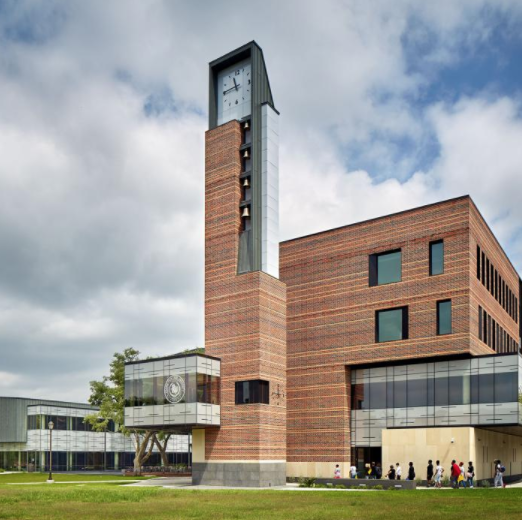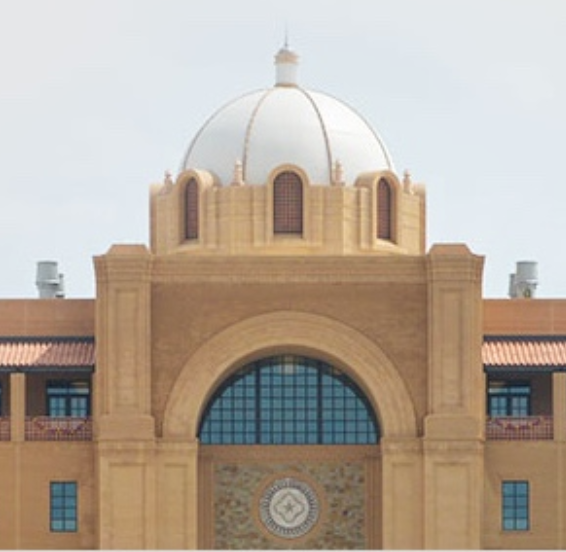Under these EPAs, NSA plans to:
- Provide academic scholarships1 to OnRamp II School undergraduate and graduate students in return for a service obligation2
- Provide internship opportunities to OnRamp II School undergraduate and graduate students
- Provide academic and career advice and assistance to OnRamp II School undergraduate and graduate students
- Provide sabbatical opportunities at NSA to OnRamp II School faculty members to enhance collaboration and partnership benefitting the Agency, the faculty members and the academic institution3
- Allow for OnRamp II Schools to seek and perform contract-based cybersecurity lablet work in mission-focused cybersecurity research4
The anticipated level of engagement will be commensurate with an OnRamp II School’s ability to exhibit a successful and sustainable STEM diversity pipeline and thereby justifying an enhanced mission partnership (e.g., sabbatical opportunities, lablet work). The primary objective of this effort is to promote the technical health of a strongly diverse STEM pipeline for NSA and to increase collaboration between NSA and academic institutions that are well positioned to support this objective. While this program is not restricted to underrepresented students in STEM fields, a proposal that demonstrates an institution’s success with the advancement of individuals from such groups is highly desirable.
To this end, NSA is seeking proposals from educational institutions that desire to enter into an OnRamp II EPA with NSA to initiate a strategic relationship to achieve the program’s stated objectives. Schools will be selected based on an evaluation of proposals in accordance with the selection criteria outlined below. Academic scholarships and other program opportunities will not be available until a school is selected as an OnRamp II participant and has executed an EPA with NSA. To ensure a manageable program size for administration purposes and to account for anticipated funding availability, the Government expects to initially select approximately four schools for OnRamp II EPAs.
Proposal Submission Guidelines
Selection Criteria
Selection as an OnRamp II School will be made on the basis of several factors that demonstrate the academic institution’s ability and process to identify and nominate underrepresented students for internships and scholarship funding at NSA, potential to support the advancement of the technical health of a strongly diverse STEM pipeline for NSA, and the academic institution’s capacity to carry out research directly applicable to NSA’s mission. Relevant factors shall include:
The Academic Institution’s demonstrated ability to support the advancement of the technical health of a strongly diverse STEM pipeline for NSA, exemplars include:
- Evidence of continuing success related to underrepresented students in the STEM fields (“underrepresented students”):
- Graduation rate gaps and general graduation rates
- Freshman underrepresented student retention rates
- Percentage of underrepresented students enrolled
- Broad institutional programs that have led to marked, quantitative successes involving underrepresented students
- Improvement in academic performance
- Matriculation to graduate and professional schools
- Individual-level student interventions
- Summer bridge programs
- Personalized academic advising, plans and support
- Contextual-level interventions
- Providing for faculty and institutional climate of inclusion
- Cultural competence
- Institutional accountability with regard to student diversity
- Creation of student programs that increase diversity of students participating in undergraduate STEM disciplines
- Approaches to addressing student resource disparity
- Designation as a Minority Serving Institution (MSI).
The Academic Institution’s demonstrated ability to support research directly applicable to NSA’s mission (e.g. NSA Cybersecurity Lablet Hard Problems), exemplars include:
- Research Influence
- The number of times work by an academic at the academic institution is cited by another scholar
- Perception of academic institution research by peers
- Impact of research as seen in research transitions
- Research sponsorship by industry, government, and the academic institution system
- Indication of commercial and government impact of an academic institution’s research
- Measure of resources and facilities available to carry out research activities
- Research Reputation
- Academic Institution ranking nationally across different disciplines
Proposal Evaluation
Submitted proposals will be reviewed by a panel of NSA employees. The Panel will meet to discuss, rank, and order the proposals according to the potential contribution and relevance to the OnRamp II program published evaluation criteria. The final ordering of proposals will be used in the selection of academic institutions for EPAs and participation in the OnRamp II program.
Eligibility
Who May Submit
It is NSA’s intent to maintain America’s domestic capabilities in STEM at the highest level. Therefore, all regionally accredited four-year and graduate level institutions in the United States and its territories, to include collaborating institutions, designated as an NSA and/or IC Center of Academic Excellence (CAE) are eligible to submit a proposal to seek designation as an OnRAMP II School.
When and How to Submit
Proposals must have been submitted by 24 April 2020. Any proposal, including any modification, or revision received after the date specified for receipt is “late” and will not be considered.
What to Submit
Academic Institutions should submit a single PDF file that comprises each of the following parts of the proposal:
- Cover Page, including:
- Name and address of Academic Institution
- Academic Institution point of contact, including:
- Name
- Telephone Number
- E-mail Address
- Mailing Address
- Executive Summary (2-page maximum)
- Description of Academic Institution relevance and potential contribution to the OnRamp II program published evaluation criteria. That is, a description of the academic institution’s ability and process to identify and nominate underrepresented students for internships and scholarship funding at NSA, potential to support the advancement of the technical health of a strongly diverse STEM pipeline for NSA, and the academic institution’s preparation for carrying out mission focused research. (8-page maximum)
- Personnel
- The personnel section shall include the qualifications of the key academic institution personnel to be involved in the OnRamp II program. Resume/curriculum vitae may be included for these individuals.
- Bibliography (as applicable)
- Facilities and Equipment (e.g. laboratories, computers, equipment) available to perform proposed activities in support of the selection criteria. (as applicable)
OnRamp II Program Administration
For questions regarding the OnRamp II Program, please contact the OnRamp II team at OnRamp@nsa.gov.

 P R O G R A M A R C H I V E S
P R O G R A M A R C H I V E S 
|
Texas A&M University |
Prairie View A&M University |
Texas A&M University |
Texas A&M University |
[1] Students must be U.S. citizens and satisfy NSA’s security clearance requirements to be eligible for employment and paid internship work. Students must agree in writing: to complete all degree program requirements for which scholarship is provided and maintain at least a 3.0 GPA on a 4.0 scale each semester/quarter; and to reimburse the United States for the total cost of scholarship provided through the OnRAMP II program if, prior to the participant completing all degree requirements, the participant’s employment with the Agency is terminated due to misconduct by the participant, by the program participant voluntarily, or by the Agency for failure of the participant to maintain such level of academic standing outlined for OnRAMP II. The procedure to reimburse the United States will be described in the EPA. Students who are unable to satisfy NSA’s requirements for a security clearance and thus are unable to undergo a summer internship will have their scholarship funding curtailed.
[2] The service obligation calculation is based on 1 year of employment payback for each year of support. Deferment will be allowed for undergraduates who pursue graduate studies. Students must agree in writing to continue in the service of the Agency for the described internship and the period of service obligation
[3] Like the students seeking internship opportunities, faculty members seeking a sabbatical at NSA must be U.S. citizens and satisfy NSA’s security clearance requirements.
[4] Under 10 USC 2192(b), NSA may enter into contracts in furtherance of an EPA. NSA envisions the potential of either sole-source or competitive contracts with OnRamp II Schools where the contractual efforts align with and support the goals of the EPA. For a description of a lablet, see the following:
NSA Cybersecurity Lablet: https://nsa.gov/News-Features/Feature-Stories/Article-View/Article/1624730/new-nsa-funded-lablets-to-advance-the-science-of-security-and-privacy




